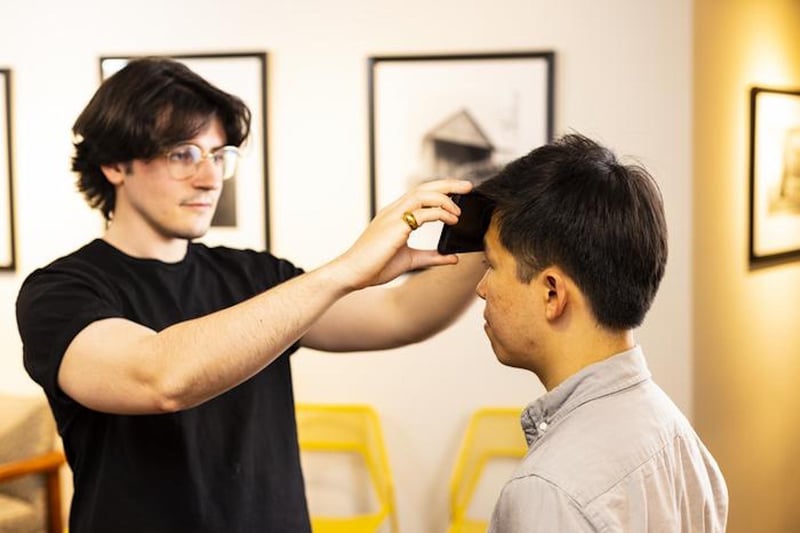Get Healthy!

- Dennis Thompson
- Posted June 26, 2023
Using Your Smartphone to Take Your Temperature? There's Now an App for That
Smartphones are already handy devices, but researchers have now developed an additional use for them -- to check for a fever.
An app called FeverPhone is the first ever to transform a smartphone into a personal thermometer without adding new hardware to the device, according to its developers from the University of Washington (UW).
The app uses the phone's touchscreen and repurposes existing battery heat sensors to gather data and estimate a person's core body temperature, researchers report.
The app estimated body temperatures in 37 patients in an emergency room with accuracy comparable to some consumer thermometers. The findings were published recently in the Proceedings of the ACM on Interactive, Mobile, Wearable and Ubiquitous Technologies.
FeverPhone needs more training data to be widely used, but the technology holds great potential for helping people track their health, the researchers said.
"People come to the ER all the time saying, 'I think I was running a fever.' And that's very different than saying 'I was running a fever,'" said co-researcher Dr. Mastafa Springston, a UW clinical instructor in the Department of Emergency Medicine.
"In a wave of influenza, for instance, people running to the ER can take five days, or even a week sometimes. So if people were to share fever results with public health agencies through the app, similar to how we signed up for COVID exposure warnings, this earlier sign could help us intervene much sooner,"Springston noted in a university news release.
How was the team able to design the app?
Clinical-grade thermometers use tiny sensors known as thermistors to estimate body temperature. Off-the-shelf smartphones also contain thermistors, but they're mostly used to monitor the temperature of the phone's battery.
The UW researchers realized they could use these sensors to track heat transfer between a person and a phone. The phone touchscreen senses skin-to-phone contact, and then thermistors could gauge the air temperature and the rise in heat when the phone touches a body.
"In undergrad, I was doing research in a lab where we wanted to show that you could use the temperature sensor in a smartphone to measure air temperature,"said lead researcher Joseph Breda, a UW doctoral student in the Paul G. Allen School of Computer Science & Engineering. "When I came to the UW, my adviser and I wondered how we could apply a similar technique for health. We decided to measure fever in an accessible way."
To test this idea, the team started by using plastic bags of warm water to simulate a human forehead, pressing phone screens against the bags. They tested three different phone models and added accessories such as screen protectors and cases to see how that affected results.
The research team then used the data from these different test cases to train a computer program to estimate body temperature.
Since the sensors are supposed to gauge the phone's battery heat, the app tracks how quickly the phone heats up and uses the touchscreen data to figure out how much of that comes from a person touching it.
Once the app was ready, the researchers took FeverPhone to the UW School of Medicine's Emergency Department for a small clinical trial in which they compared its temperature estimates against an oral thermometer reading. They recruited 37 patients, 16 of whom had at least a mild fever.
To use FeverPhone, patients held the phones like point-and-shoot cameras, using their forefingers and thumbs on the corner edges so that the heat coming from their hands wasn't registered.
They then pressed the touchscreen against their foreheads for about 90 seconds, which the researchers found to be the ideal time to sense body heat transferring to the phone.
Overall, FeverPhone estimated patient core body temperatures with an average error of about 0.41 degrees Fahrenheit, which researchers said is in a clinically acceptable range.
In addition to further honing the app's ability to gauge body temperature, the researchers have highlighted a few areas for further investigation.
The study didn't include participants with severe fevers (above 101.5 F) because those temperatures are easy to diagnose and sweaty skin tends to confound other skin-contact thermometers, researchers said.
They also want to train FeverPhone to run on more phone models than the three included in development, as well as on other devices such as smartwatches.
"We started with smartphones since they're ubiquitous and easy to get data from,"Breda said in the release. "I am already working on seeing if we can get a similar signal with a smartwatch. What's nice, because watches are much smaller, is their temperature will change more quickly. So you could imagine having a user put a Fitbit to their forehead and measure in 10 seconds whether they have a fever or not."
More information
The Cleveland Clinic has more about normal body temperature.
SOURCE: University of Washington, news release, June 21, 2023
